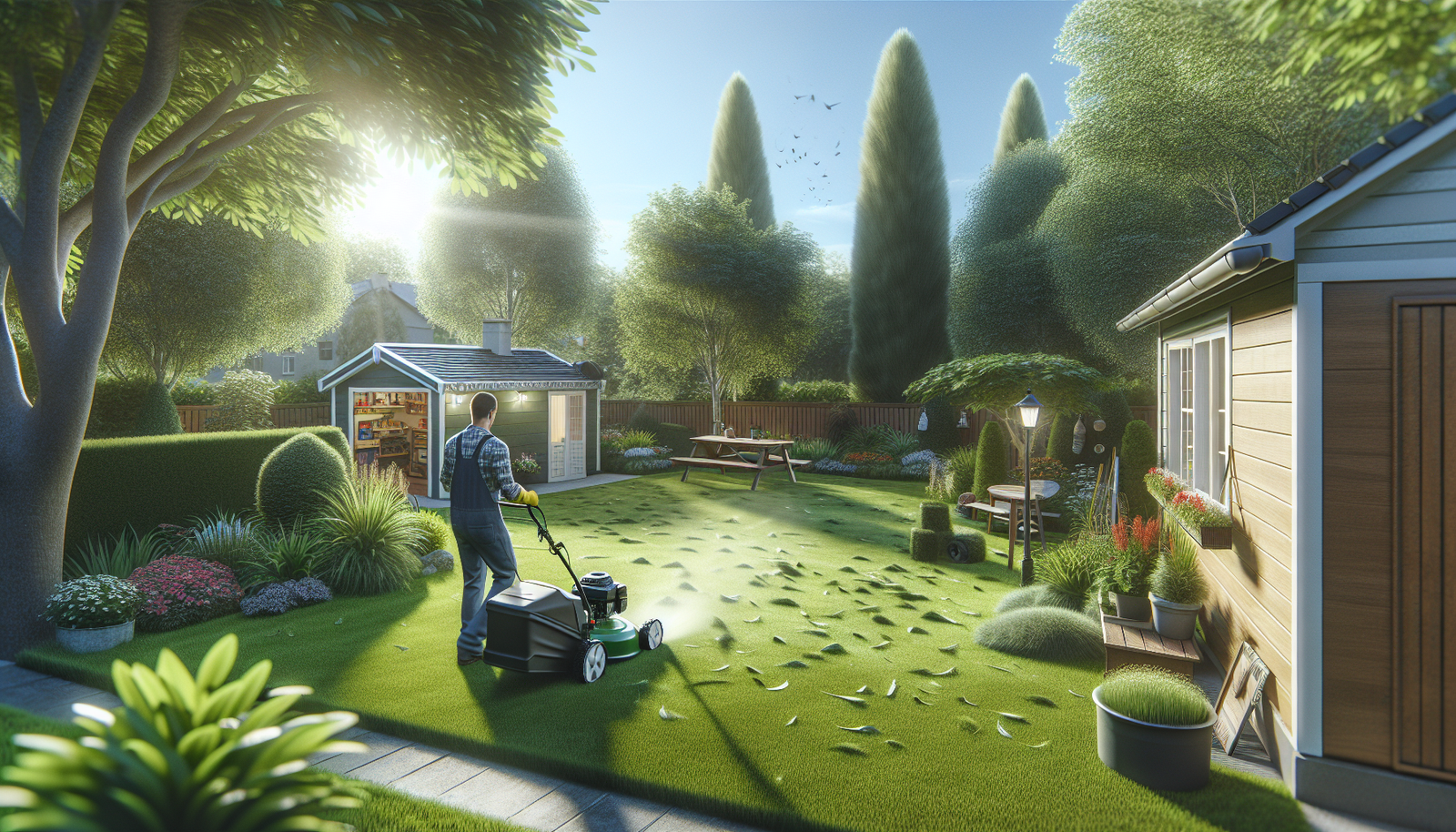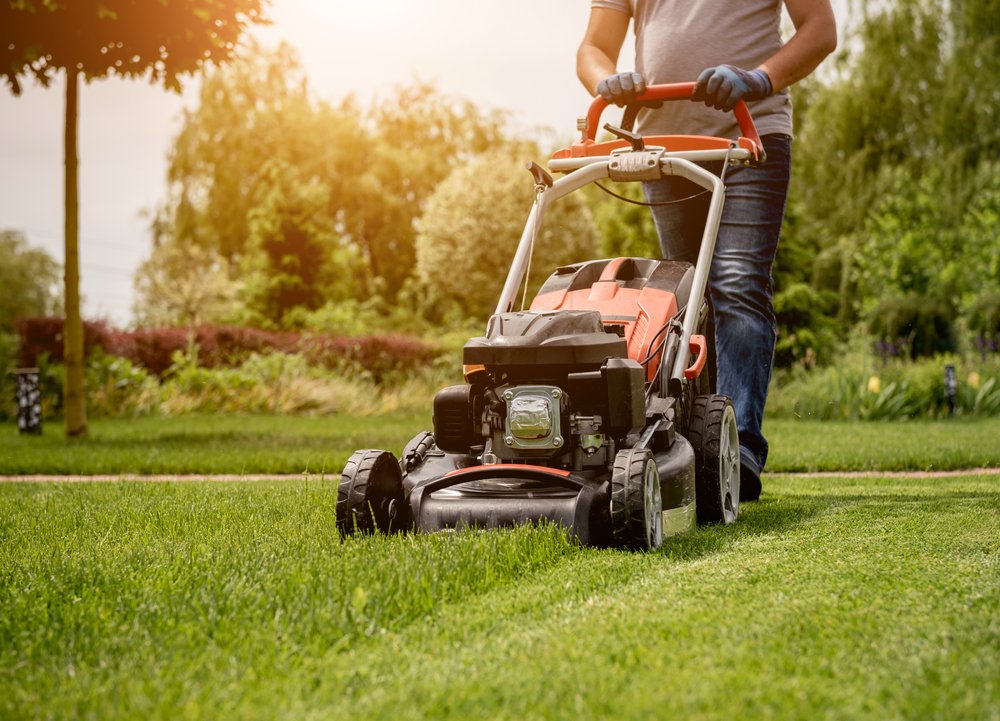Navigating the plethora of landscaping questions about maintaining a lush and healthy lawn can seem daunting, especially when trying to decipher the best practices for yard cutting and the use of lawn care equipment. Whether you’re a seasoned gardener or a novice embarking on the journey of homeownership, understanding the nuances of lawn maintenance is key to achieving that picturesque outdoor space. Alongside aesthetics, a well-maintained lawn contributes significantly to the overall value and appeal of your property, underscoring the importance of mastering the essentials of grass cutting and landscaping care.
This article aims to demystify some of the most common landscaping questions, providing expert answers that will guide you in optimizing your mowing service and ensuring your lawn thrives. You’ll learn about the ideal mowing height to keep your grass healthy, tips on maintaining your lawn care equipment to extend its life and effectiveness, the benefits of grasscycling, and the indispensable grass cutting rule that ensures optimal growth and health of your lawn. By equipping yourself with this knowledge, you’ll not only enhance the beauty of your outdoor space but also ensure it remains vibrant and inviting throughout the year.
How Often Should You Mow Your Lawn?
When determining how often you should mow your lawn, several factors come into play that affect the frequency of mowing. Understanding these can help you maintain a healthy and aesthetically pleasing lawn.
Factors Affecting Mowing Frequency
- Grass Type: Different types of grass have varying growth rates and optimal heights. For instance, cool-season grasses may require more frequent mowing during the spring and fall, while warm-season grasses might grow more vigorously in the summer.
- Weather Conditions: Weather plays a significant role in grass growth. Rainfall and temperature can either accelerate or slow down growth, influencing how often you need to mow.
- Lawn Health and Fertilization: A well-fertilized lawn will grow faster and might need more frequent mowing to keep it at an ideal height. Conversely, a lawn that’s struggling or less fertilized won’t grow as quickly.
- Personal Preference for Lawn Aesthetics: Your desired lawn appearance also dictates mowing frequency. Some prefer a manicured look, which requires regular mowing, while others may opt for a more natural style, which allows for less frequent mowing.
Seasonal Adjustments
Your mowing schedule should adapt to the changing seasons to best support lawn health and growth:
- Spring: This is a growth-intensive season for most lawns, necessitating more frequent mowing to keep up with the rapid growth.
- Summer: Depending on the grass type and your climate, you might need to mow frequently due to warm temperatures encouraging growth, or less often if there is a drought.
- Fall: Growth slows as temperatures cool, but it’s still important to maintain a regular mowing schedule to prepare the grass for winter.
- Winter: In most climates, mowing is minimal or not needed as grass growth halts.
By adjusting your mowing frequency according to these factors and seasonal changes, you ensure that your lawn remains healthy, robust, and visually appealing throughout the year.
What is the Ideal Mowing Height?
Determining the ideal mowing height for your lawn is crucial for maintaining its health and aesthetic appeal. The correct height varies depending on the type of grass and the current season. Here, you’ll discover guidelines tailored to different grass types and how to adjust mowing heights based on varying conditions.
Grass Types and Their Mowing Heights
Each grass type has a specific range of heights that optimizes its health and growth. For cool-season grasses such as Kentucky bluegrass, tall fescue, and perennial ryegrass, maintaining a height of about 2.5 to 4 inches is ideal. In contrast, warm-season grasses like Bermuda grass, zoysia, and centipede grass thrive when kept between 1 to 3 inches tall 1.
Here’s a quick guide to help you identify the best mowing height for common grass types:
- Cool-Season Grasses:
- Kentucky Bluegrass: 2.5 to 3.5 inches
- Tall Fescue: 3 to 4 inches
- Perennial Ryegrass: 2.5 to 3.5 inches
- Warm-Season Grasses:
- Bermuda Grass: 1 to 2 inches
- Zoysia Grass: 1.5 to 2.5 inches
- Centipede Grass: 1 to 2 inches
Adjusting Heights Based on Conditions
Adjusting the mowing height according to seasonal changes and specific lawn conditions can significantly impact the health and resilience of your lawn. During the hot, dry months of summer, it’s advisable to raise the mower blade. This allows the grass to grow slightly taller, which helps retain soil moisture and protects the roots from heat stress. Conversely, in the spring and fall when growth is more vigorous, you can lower the blade for a closer trim, encouraging healthy, dense growth 1.
It’s essential not to remove more than one-third of the grass blade in a single mowing session. Cutting too much can stress the grass, reducing its ability to perform photosynthesis and making it more susceptible to pests and diseases 2.
By adhering to these guidelines and making adjustments based on your specific grass type and the prevailing weather conditions, you can maintain a lush, healthy, and visually appealing lawn throughout the year.
How to Maintain a Mower
Pre-Mowing Checks
Before you start mowing, it’s crucial to ensure your mower is in top condition to avoid any potential issues. First, check the sharpness of the blades; sharp blades ensure cleaner cuts, while dull blades may tear the grass, affecting its health and appearance 34. Next, verify that the mower deck height is correctly adjusted for your specific turf type to prevent cutting the grass too short or leaving it too long 3. Lastly, ensure the engine oil is clean, as dirty oil can hinder engine efficiency and increase the risk of damage 34.
Seasonal Maintenance Tips
Maintaining your mower requires different actions as the seasons change to keep it performing optimally. In spring, start with a thorough cleaning, checking for any damaged parts, and replace the spark plug and air filter as needed 5. During summer, focus on regular cleaning and blade sharpening, and ensure all belts and bolts are secure 5. In the fall, clean the mower thoroughly, check the wheels for wear, and lubricate all moving parts 5. Before winter storage, ensure the fuel is stabilized and the mower is stored in a dry, frost-free area to prevent rust and corrosion 65.
By following these maintenance tips and conducting regular checks, you can extend the life of your mower and enjoy a healthier, more beautiful lawn.
The Benefits of Grasscycling
Nutrient Recycling
When you choose to grasscycle, you are actively participating in a natural recycling process that benefits your lawn significantly. By leaving the grass clippings on the lawn after mowing, these clippings decompose quickly due to their high water content, approximately 80-85% 78. This rapid decomposition releases valuable nutrients like nitrogen back into the soil, providing up to 5 pounds of nitrogen per year per 1,000 square feet 7. Such nutrient recycling not only feeds the soil but also promotes a healthier, greener lawn without the additional cost of fertilizers 8.
Environmental Benefits
Grasscycling offers substantial environmental advantages by reducing waste and conserving resources. Annually, a significant amount of yard waste, including grass clippings, ends up in landfills, accounting for about 12% of total municipal solid waste 7. By grasscycling, you are eliminating this contribution to landfill waste, which is especially critical during peak seasons when yard waste can comprise up to 50% of landfill content 9. Furthermore, grasscycling reduces the need for water and chemical fertilizers, minimizing runoff that could lead to water pollution 108. This simple practice not only saves time and money by avoiding the need to bag and dispose of lawn clippings but also supports a more sustainable approach to lawn care.
Conclusion
Throughout this article, we’ve embarked on an educational journey into the essential practices of lawn maintenance, scrutinizing everything from optimal mowing frequencies and heights tailored to various grass types, to the nuanced care of your lawn mowing equipment. Moreover, by embracing techniques such as grasscycling, not only are we nurturing our lawns to thrive healthily and beautifully, but we are also contributing to environmental sustainability. These insights not only aim to elevate the appearance and health of our lawns but also underscore the importance of intentional and informed lawn care practices in enhancing our immediate surroundings and, by extension, our quality of life.
Adopting these expert recommendations and adjusting them to the unique needs of your lawn can lead to remarkable improvements in its vitality and resilience. It encourages us to reflect on the broader implications of our lawn care routines, not just for the aesthetic and health benefits they bestow upon our green spaces, but also for their environmental impact. As we move forward, let us consider further research or alternative methods that might offer even greater benefits to our lawns and the planet. Ultimately, the cultivation of a lush, vibrant lawn is an ongoing journey of learning, adaptation, and mindful care, reflecting our commitment to both personal satisfaction and ecological stewardship.
FAQs
Why do landscapers often mow grass in a diagonal pattern?
Landscapers typically mow diagonally not only to enhance the lawn’s appearance but also to promote the health of the grass. In regions like Florida, this method is particularly prevalent on a commercial scale to prevent the formation of ruts in the lawn, which can result from the repeated use of heavy mowers.
What steps should you follow to provide an accurate lawn mowing quote?
To quote a lawn mowing job accurately, follow these six steps:
- Create a pricing sheet.
- Evaluate the size and condition of the client’s property.
- Consider any additional services and materials that might be required.
- Calculate the costs of labor.
- Include overhead costs.
- Determine your profit margins.
What are common mowing mistakes made by homeowners?
The most frequent mistake homeowners make is cutting the grass too short, a practice known as “scalping.” This involves removing more than one-third of the grass’s height in a single mowing. Many believe this reduces the frequency of mowing, but it can actually harm the lawn.
What is the appropriate time to mow the lawn respecting neighborhood etiquette?
To respect neighborhood etiquette, it’s advisable to start mowing the lawn no earlier than 9 am on both weekdays and weekends. This helps avoid disturbing neighbors during typical dinner or bedtime hours. Keep in mind that specific neighborhoods may have their own accepted mowing times.


